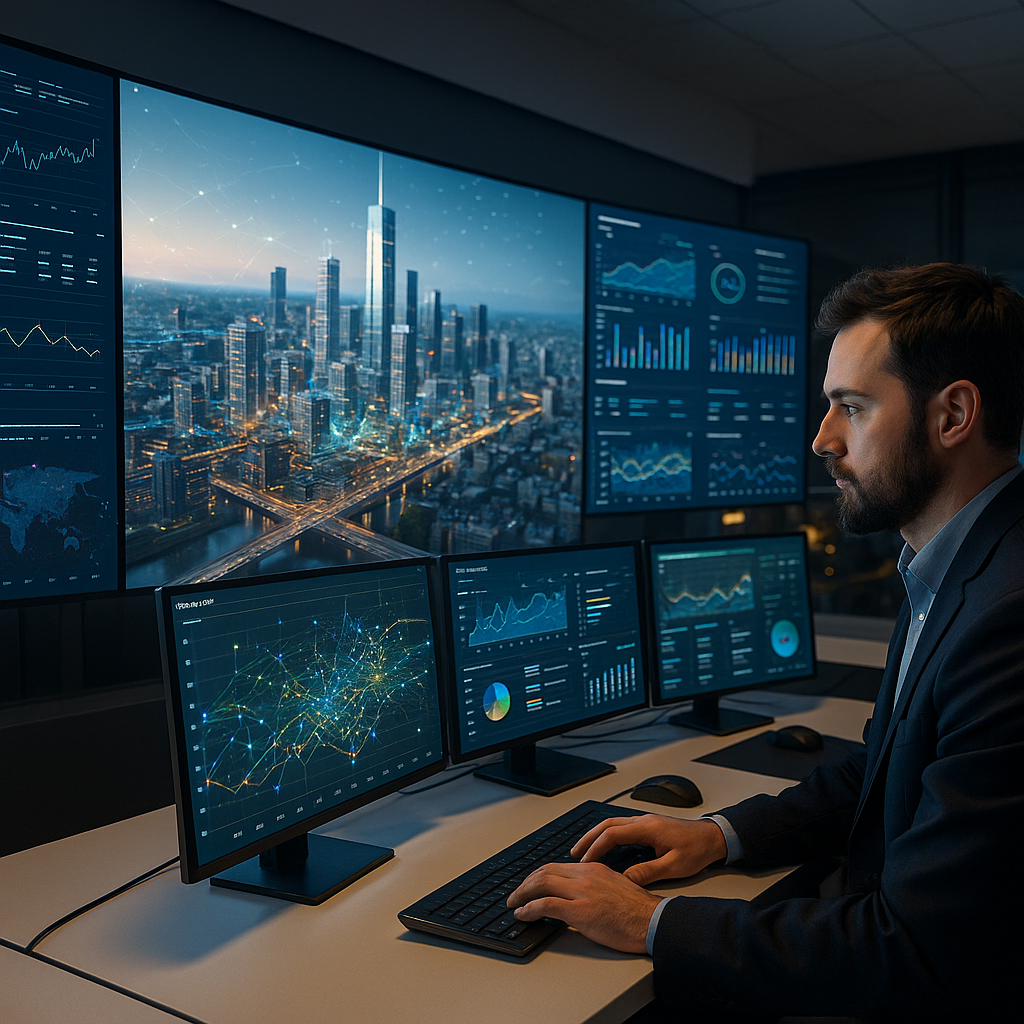AI-driven digital twins transform urban planning in smart cities
AI-based analytics form the most impactful pillar in the model, enabling digital twins to conduct pattern recognition, demand forecasting, and anomaly detection. Machine learning algorithms can analyze historical and real-time data to recommend planning interventions with greater precision and timeliness. The study acknowledges the growing concern about AI's opacity and the ethical implications of automated decision-making, calling for increased transparency and explainability.

Researchers have unveiled compelling evidence supporting the use of artificial intelligence (AI)-driven digital twin technology in enhancing city planning across Greece. Authored by Panagiotis Germanakos, Styliani Chousou, and Nikolaos G. Bourbakis, the study explores how real-time data integration, simulation fidelity, system maturity, and AI-based analytics collectively improve planning effectiveness in smart city ecosystems.
Published under the title “Enhancing Predictive Urban Planning in European Smart Cities Through AI-Driven Digital Twin Technology: A Case Study of Greece” in Urban Science (2025, 9, 267), the study examines the experience of 301 urban planning professionals and smart city stakeholders in Athens, Thessaloniki, and other key urban centers. It establishes a quantitative, evidence-based foundation for deploying digital twin technologies that mimic, analyze, and forecast city dynamics with a high level of precision.
What are the core components of effective digital twin technology?
The research focuses on a conceptual framework comprising four critical digital twin features - simulation fidelity, real-time data integration, AI-based analytics, and system maturity. These components are framed within the dual lenses of Complex Adaptive Systems (CAS) theory and the Technology–Organization–Environment (TOE) model. Together, they illustrate how cities, viewed as complex and evolving ecosystems, can be better understood and managed using responsive and intelligent digital replicas.
Simulation fidelity emerges as a foundational factor, reflecting the extent to which a digital twin can accurately mirror urban realities. High-fidelity models enable planners to conduct scenario analysis for traffic congestion, environmental impact, and infrastructure degradation. However, the study underscores a notable trade-off between realism and computational efficiency, highlighting that overly detailed models can be resource-intensive and may not always yield proportionately better outcomes.
Equally vital is real-time data integration, which allows digital twins to ingest continuous data from sensors, IoT devices, and urban databases. This feature boosts responsiveness and adaptive planning, especially during emergencies or fluctuating environmental conditions. The researchers point out several barriers, including data fragmentation, interoperability issues, and data governance challenges that must be overcome for this capability to reach its full potential.
AI-based analytics form the most impactful pillar in the model, enabling digital twins to conduct pattern recognition, demand forecasting, and anomaly detection. Machine learning algorithms can analyze historical and real-time data to recommend planning interventions with greater precision and timeliness. The study acknowledges the growing concern about AI's opacity and the ethical implications of automated decision-making, calling for increased transparency and explainability.
System maturity rounds off the model, representing the long-term performance and reliability of digital twin platforms. Mature systems are characterized by operational stability, stakeholder trust, and institutional integration. The authors stress that while digital twin adoption is growing, achieving maturity demands significant investment in infrastructure, user training, and policy alignment.
How do these technologies impact urban planning outcomes?
Based on a structured survey of 301 professionals, the researchers tested the relationship between the four digital twin components and overall planning effectiveness. Participants included urban planners, IT professionals, data scientists, and infrastructure managers working in Greece’s most prominent smart city initiatives.
The study reveals a strong and statistically significant correlation between each digital twin feature and urban planning performance. AI-based analytics emerged as the strongest predictor, followed by real-time data integration, system maturity, and simulation fidelity. Regression analysis confirmed that these features collectively explain nearly 69 percent of the variance in planning effectiveness.
The findings show widespread agreement among respondents on the transformative potential of these technologies. Approximately 76% confirmed the value of high-fidelity simulations in improving predictive accuracy, while 78% highlighted the role of AI tools in enhancing the speed and responsiveness of planning processes. More than 77% endorsed the utility of real-time data integration, and over 74% emphasized the importance of system maturity for long-term success.
The researchers emphasize that digital twins enable planners to shift from reactive to proactive planning modes. Instead of responding to infrastructure failures or traffic disruptions after they occur, planners can anticipate such issues and intervene early. This predictive capability is critical for building resilient urban environments capable of adapting to climate change, demographic shifts, and economic pressures.
What are the practical challenges and policy implications?
The study outlines several practical hurdles that must be addressed for widespread and sustainable implementation. First, the initial cost of building and maintaining digital twins remains high, especially for cities with aging infrastructure or constrained budgets. Second, legacy IT systems often lack the interoperability required to integrate seamlessly with modern platforms, causing delays and inefficiencies.
There are also concerns about data security and ethical governance. As digital twins increasingly rely on personal and environmental data, robust data protection mechanisms must be put in place to ensure privacy and compliance with regulations. The researchers advocate for ethical AI practices, including algorithm explainability and user consent protocols, to build public trust.
From a policy perspective, the study calls for a more coordinated and strategic approach to digital twin adoption. Governments should create supportive regulatory environments, promote open data standards, and invest in digital skills training for urban planning professionals. Furthermore, collaboration between city governments, technology vendors, and research institutions will be essential to accelerate innovation and adoption.
- FIRST PUBLISHED IN:
- Devdiscourse










